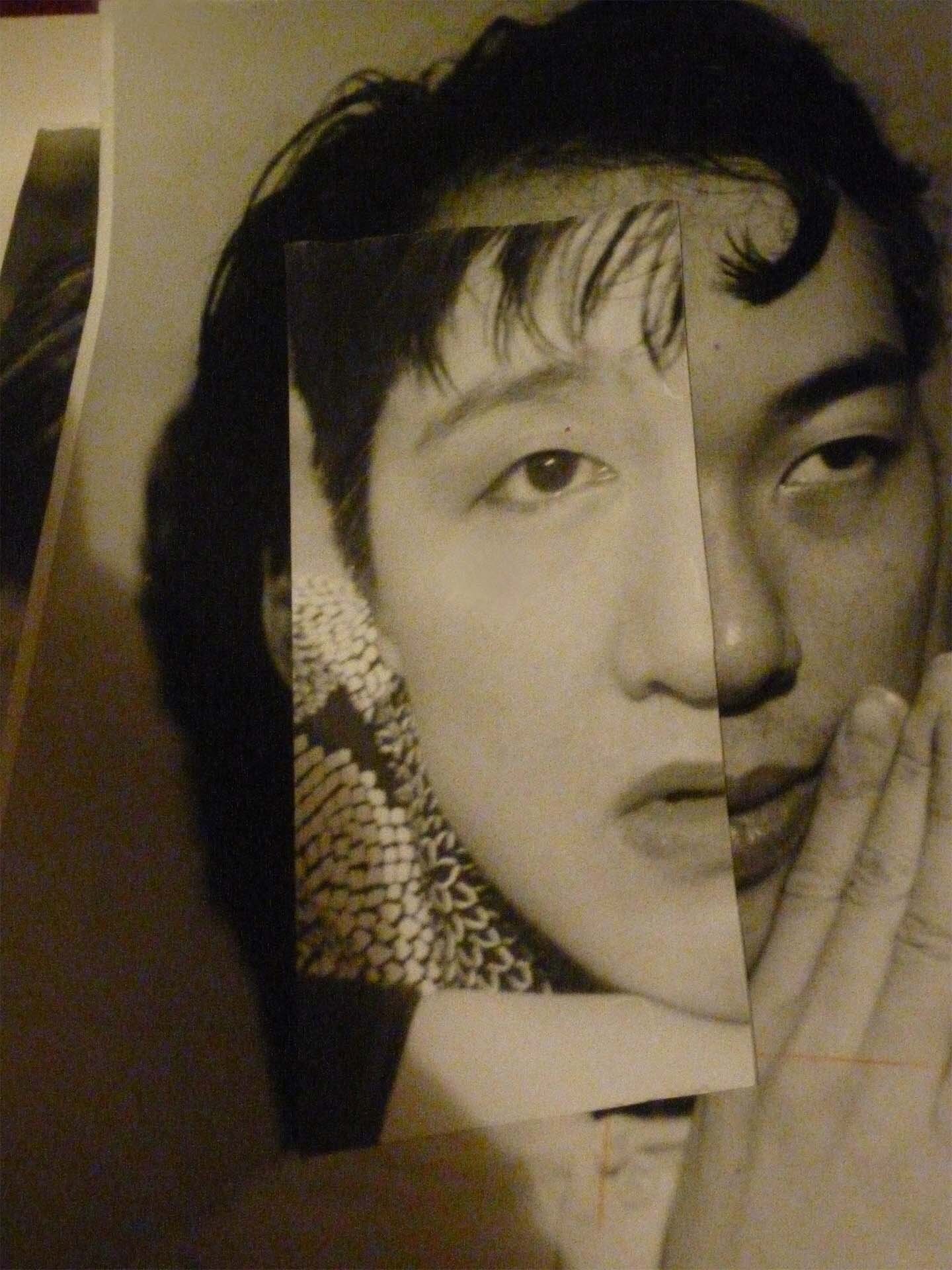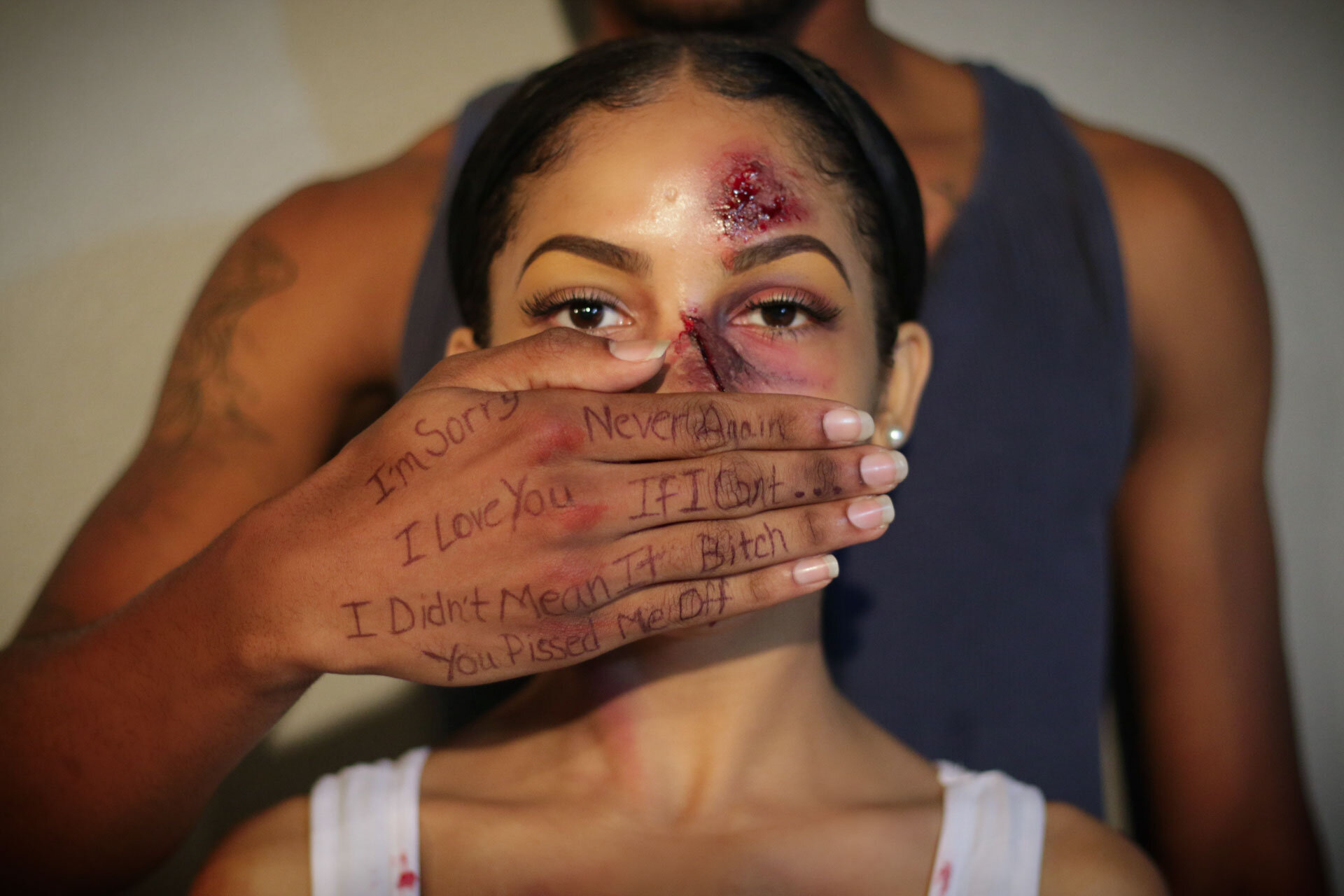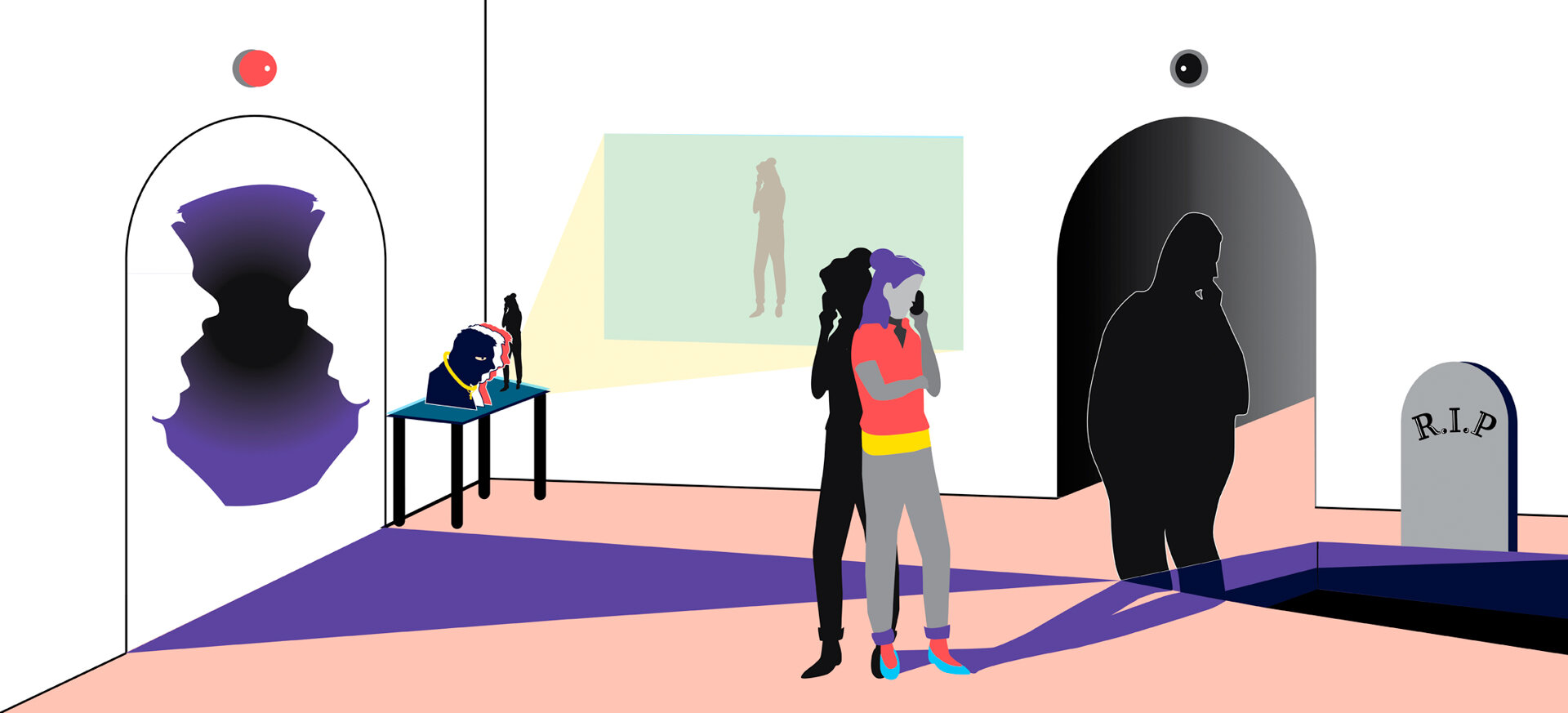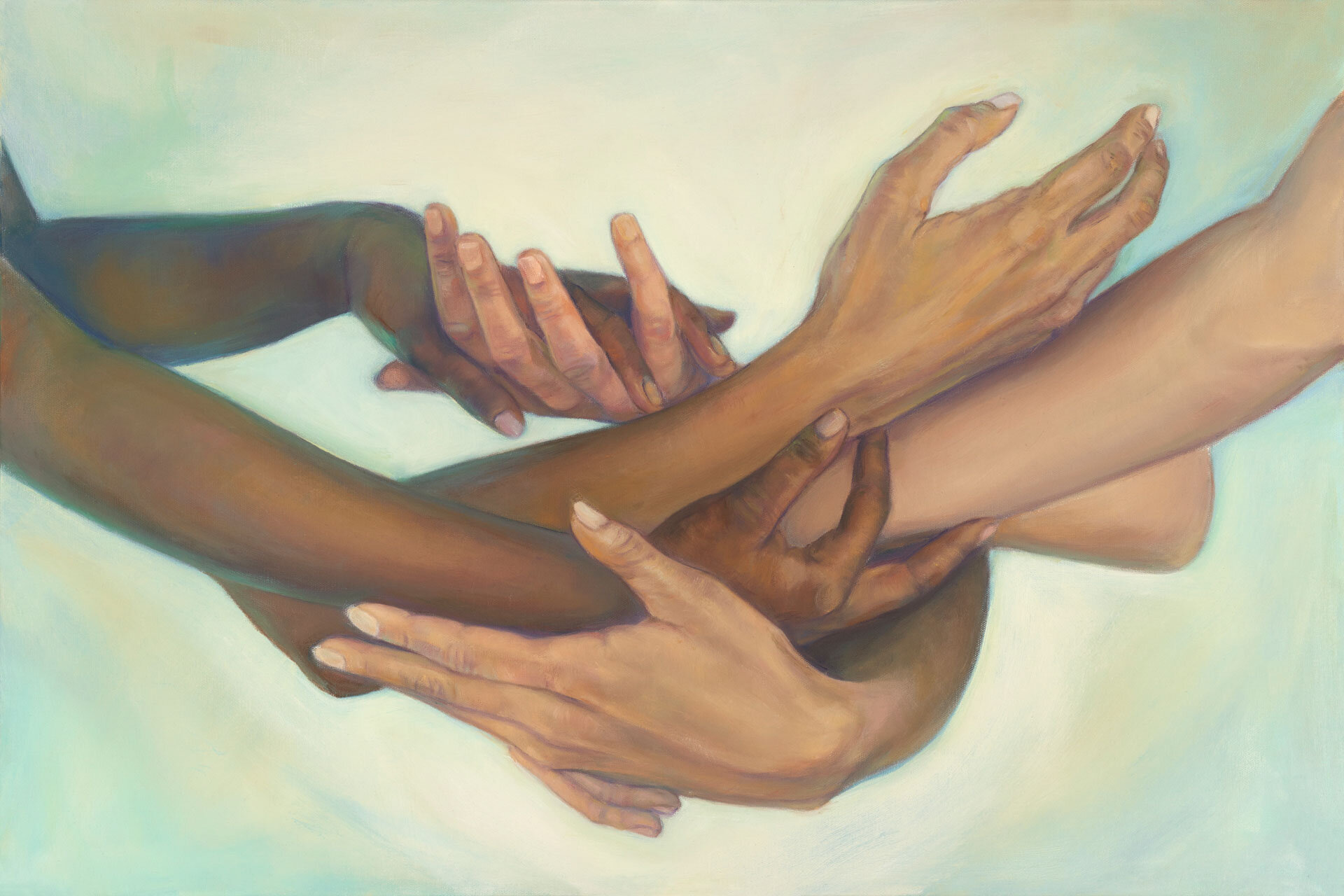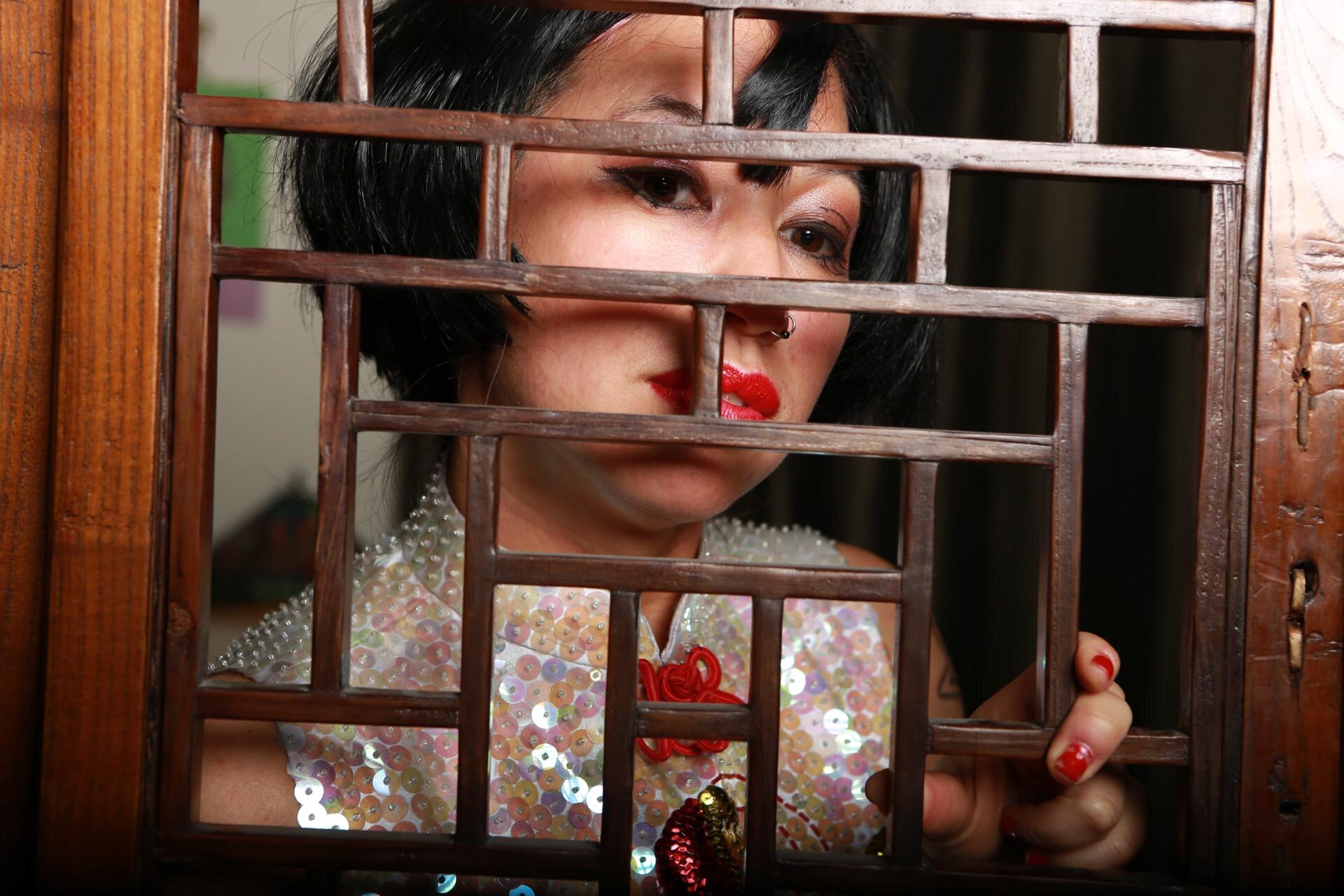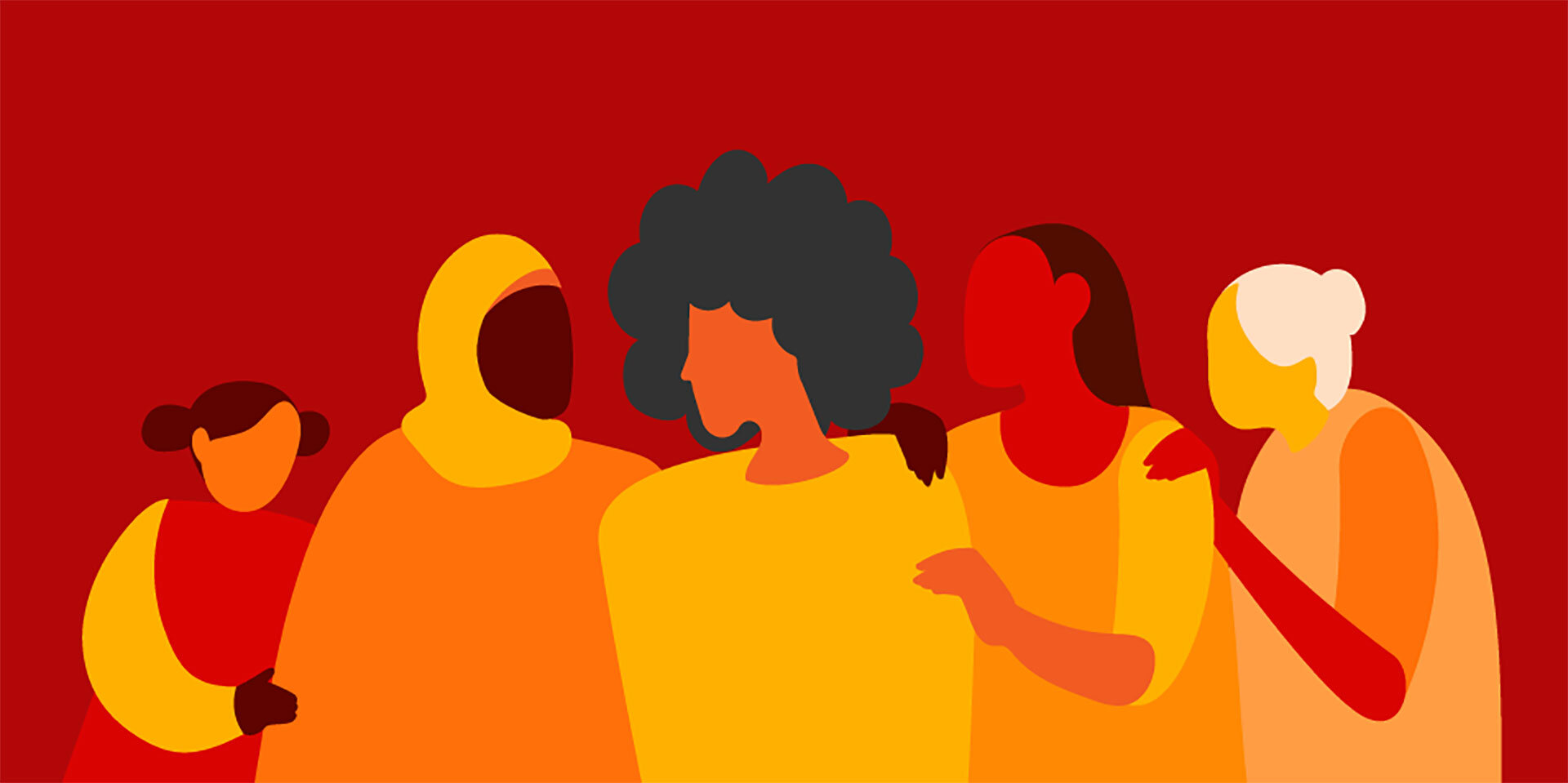SaveArtSpace has partnered with Take Heart You Are Not Alone and curator David F. Martin to assemble a visual framework that will draw awareness to the issue of domestic violence in Seattle, WA. Our goal is to use artwork to capture the attention of the public in order to provide them with contact information for much needed community resources available to victims and survivors.
The Gender Based Violence selected artists are Nina Kuo, Magali Trapero, Debra Lott, Delaney George aka Laneslense, A.C. Evans, Mariko Passion, and Lilli Muller.
Curated by David F. Martin.
We feel that art can provide a means to explore community responses and showcase how people help address and hopefully prevent domestic violence in their families and neighborhoods. This critical support provides survivors a path to navigating their healing journeys.
During the week of October 4, 2021, SaveArtSpace will launch public art installations for each selected work on billboard ad spaces in Seattle, WA. The public art will be on view for at least one month.
Selected Artists
Nina Kuo He She LGBT
Location: S 126th St & Renton Ave S, Seattle, WA
Nina Kuo creates Artwork about fictional and conscious historical references with an individual modern language in her expressions. Methods of painting, sculpture, multi-media and montage have long-lasting experimental effects as she branches out in Art installation, animation, videos and book design. She witnesses and reveals discoveries of global and feminist realities while taking risks in interpreting newer Art idioms.
"My artworks appeal to in a meditative spirit with global influences from an Asian past & probes the scholarly mundane world while appreciating one's anachronistic society. Photo/paintings, murals are created to expand visualization of these connections.”
Connect with Nina on Instagram at @crazykitschasians.
Magali Trapero Breaking Free
Location: 1st Ave S & SW 156th St Burien, WA
Magali Trapero is a multidisciplinary artist born in Mexico. The main focus of her ongoing artwork is social justice. She is profoundly inspired by the human spirit and the natural world, and deeply troubled by injustice. Although she creates her artwork with a variety of media, she favors encaustic and oil paint. Her work has been a part of collective international exhibitions. Currently, she resides in the picturesque countryside of central Mexico, and has lived half of her life in the USA.
She depicts life as a collage of beauty and inner pain, intertwined with undeniable hope and treasured moments of joy. For her, art is the channel that makes possible the integration of the torturous and grotesque aspects of life with the beauty of the natural world: a tapestry of symbolism created by the richness of color and the mystical elements of our world.
In her Breaking Free artwork, various symbolic elements are integrated. Prominently, the three birds in formation suggest a triangle that, in itself, contains our own personal symbolic meaning. Each bird, in its natural character becomes allegorical, while each carries in its plumage one of the primary colors, thus enhancing deeper meaning. Furthermore, the lady, in her hopeful pose, despite bearing the wounds inflicted by violence, shares with us a narrative on the power of resilience. Her earring, in all its prominence, alludes to a dreamcatcher. And in the background, the cast shadows reveal a tree with a branch displaying grotesque buds, from which we can observe the shadow of gender-based violence. Inclusively, the artwork exhibits the array of colors of the rainbow, with the dominant hue representing our fight against gender-based violence.
Connect with Magali with Instagram at @magalitrapero.
Debra Lott United
Location: S Grady Way & Williams Ave, Renton, WA
Debra Lott is an American figurative artist who creates oil paintings and drawings that empower women and reflect upon the human experience. Her paintings often explore social, political, and contemporary issues. Lott’s large-scale paintings are created in richly colored palettes and the alla prima style. Her techniques include naturalism, expressionism, semi-abstraction and figurative distortion.
In 2018 Lott produced a solo exhibit that was created in the context of the “#METOO” movement where she revealed pivotal moments when women broke free from the culture of sexual harassment. In her 2020 solo exhibit she created a series titled #WomenStrongerTogether that featured the beauty, strength and resiliency of women expressing empowerment and perseverance by uniting together.
Connect with Debra on Instagram at @debralott.
Delaney George aka Laneslense When to say When
Location: S Brandon St & Martin Luther King Jr Way S, Seattle, WA
Delaney George aka Laneslense is a New Orleans-based photographer, director, and visual artist operating under her brand LANESLENSE. Delaney's work aspires to extract feeling from the viewer by consistently portraying themes of nostalgia, femininity, vibrance, and glamour. Vintage/'Golden age' themes are used in each photoshoot to create timeless visuals that evoke a sense of inclusion and re-imagination. Creating images that are both a contemporary ode to the past AND a safe space to display modern figures in spaces they aren't commonly represented or historically welcomed.
This piece tells the story of New Orleans Makeup Artist and Domestic Violence survivor Ebony Malika. Through prosthetics and recalls of some of the most challenging times in life, Ebony translates her talents to the canvas of models Brandy and Devon to depict the battles she's overcome. I am honored to have been the photographer to capture and direct such an important story. I feel this piece is the plythe of so many in domestic and gender based violence. This piece is standing up to abusers, not being silent, not enabling or accepting the lies and excuses. This piece is knowing when to say when.
Connect with Delaney on Instagram at @laneslense.
A.C. Evans The Present of Presence
Location: Pacific Hwy S., & S. 200th St., SeaTac, WA
A.C. Evans is an Artist/Curator and Designer based in Houston.
As an interdisciplinary artist, curator and designer, I create projects that provide original commentary on global media consumption, culture and concepts of identity. I enjoy combining what may be perceived as contrasting mediums or genres into synergies of work that challenge traditional assumptions of art.
Conceptually, I’m interested in exploring how New Media can create immersive and interactive experiences that allow art to extend beyond the standard white cube space. As a curator, I’m deeply concerned with arts equity and Artists' rights. To that end, I lead an organization that manifests opportunities for Artists by creatively investing resources into the development of sustainable careers.
Connect with A.C. on Instagram at @acevansart.
Mariko Passion But...is fantasizing about killing ever okay?
Location: Rainier Ave S & S Walker St., Seattle, WA
Connect with Mariko on Instagram at @msmarikopassion.
Lilli Muller Headtrippin' 1
Location: Martin Luther King Jr Way & E Spring St., Seattle, WA
A German-born multidisciplinary artist and community activist, Lilli Muller currently lives and works primarily in Los Angeles, California. As a multi-award winning and internationally-collected artist, she has been honored by the City of LA and Art Share LA with the “Arts Incubator Humanitarian Award” for contributions to the arts community and many years of arts advocacy, and was recently recognized by the City of Los Angeles for “The Mandala Project Los Angeles: The Wall” installation. Even as a child, Lilli always knew she would be an artist, advancing to one of the top artists in her high school, garnering the attention of teachers who encouraged her inherent artistic talent. Influenced by local Middle Age and Renaissance castles with their internationally renowned collections of glass, weapons, and armor, and churches housing famous Cranach sculptures and Durer paintings, Lilli learned to observe not just objects, reflections, and light sources, but the textures of her environment, breathing in ancient traditions and the essence of Europe. In her desire to freely create and find her own voice she embarked on a 6-month cross-country journey throughout the US, and then chose to settle in Southern California in 1980.
At that time, her work was still largely 2-dimensional, but she was then introduced to plaster casting, which shifted her work in a completely new direction. Experimentation with plaster gauze allowed her to transform her figurative and body-part drawings into 3 dimensions and a realization dawned of her true artistic vision. It was her moment of revelation and would define her future works as a multidisciplinary artist.
“The gauze texture and overlapping crisscross patterns were the perfect patchwork of what we as human beings are made of – a metaphor of life. Self-discovery, my own personal development, trials and tribulations in my art were always apparent, starting with my early drawings of my own body, leading me to expanding my study of nudes – exploring the tension, sexuality of male/female, and the differing perceptions of their roles from Europe compared to the more puritanical version and culture in the US I was confronted with at that time.”
In 1981, Muller read an article about Louise Bourgeois that precipitated another life-altering change. Mesmerized by the story, Muller contacted the renowned French artist, beginning a lifelong friendship, mentorship and participation in Bourgeois’ famous art salons and Sunday teatime events. There, Lilli met and collaborated with many international artists, amounting to a decade of growth that shaped the future direction of Muller’s life’s work.
“My time with Louise inspired me to expand my artistic vision beyond myself to embark on a new creative journey, seeking an infinite sculpture that continuously changes, evolves, and still remains timeless. The metamorphosis of my ongoing “Mandala Project Series” is closing in on that vision. Now it is clear to me that I am doing exactly what I was always meant to do.”
Muller has since honed her art, and created substantial narratives to address social issues, humanitarian causes, and political turmoil in the world, trying to find the balance within. Today, Muller is best known for her unique signature performances, installations and images created through figurative body-casting in plaster/fiberglass. Using the human casts as armature, her installations capture the core presence defined by the absence of their origins and seek to stimulate conversation about topics affecting the global community individually and as a whole. Large scale site -specific conceptual installations now often include multiple elements including drawing, painting, mixed-media sculpture, photography, performance art, and video. Layered stories and narratives are essential to her work, and the key to discovering each installation’s true meaning.
Her casting sessions are mostly done in public settings, involving participants in an act of intimacy, acceptance, communion, ritual, and sensuality. Attempting to reformulate our human condition with “freeze-framed” bodies and body parts, Muller mirrors current situations and captures the essence of particular moments in time, drawing attention to things we often would rather not see, but inevitably become a part of us all.
“Through my ongoing internationally exhibited works, “The Mandala Project Series,” I am continuing to follow my own personal goal to create an ever-morphing body of work that changes over time and yet maintains constant validity.”
“My current work focuses on labor-intensive, multidisciplinary, interactive performance projects and installations that address global issues and the state of humanity worldwide. The “Mandala Project Desert: Collateral Damage” staged in the Mojave Desert in 2018, addressed the plight of thousands of unknown migrants who perished in the desert while crossing the border from Mexico to the US. Their unclaimed bodies and bones are literally left in the dust, most of them never to be found, or buried in mass graves, remaining unidentified, as my installation of white plaster body parts symbolized. It is about the loss of their identity, and through this installation, the attempt to give it back, with respect and acknowledgment of their life, home, culture, and tradition, no matter their origin. “I want to give them an identity, a name, a respect for their struggle and their quest for a better life, and honor them for their lives that we will never know.”
In 2017 during the Venice Biennale, Muller created a large-scale installation in the church, “Chiesa Delle Zitelle.” Visitors were invited to participate in the creation of the artwork “The Boat,” inside the church for the duration of the exhibition. This exhibition was inspired by the global refugee crisis and all the lives lost in the Mediterranean Sea, trying to escape through the treacherous waters from Libya to Europe.
She was invited back to create an immersive interactive installation, “We Are Humanity” on Guidecca, during the 2019 Venice Biennale as one of the collateral events with “A Collective Meditation on Humanity”, in response to the global diaspora and displacement of millions of people around the world seeking asylum.
Returning to Italy, her latest project will be open to the public during the Venice Biennale, 2022. Surviving the global standstill during the COVID pandemic, she will be exhibiting a large scale “Global Supper” in the renowned Cloister in Cannaregio, imagining the whole world under one roof, united at one large table, reflecting on our future while “serving humanity”.
Other pending projects include The Mandala Project: Ground Zero, The Mandala Project Berlin: 14 days Along the Berlin Wall, and The Bridge to Selma. She is planning multiple projects destined for Europe and the Middle East that will impact the audience by engaging them in dialog, and affecting change in communities, one piece of art and one person at a time. These complex, multi-media exhibits will again be various elements including sound, projection, 2D art, and video interaction with performance art.
head trip (plural head trips)
1. (informal) An experience or set of experiences which is intellectually challenging or stimulating.
2. (informal) A disorienting, exciting experience, especially one consisting mainly of striking sensory impressions.
3. (informal) A state of mind in which one is distracted, disturbed, or unnerved, whether self-induced or resulting from ill-treatment by others.
Inspired by our current events in this time of self-isolation, social distancing and quarantine, I felt compelled to explore a bit deeper the notions of what confinement really means to each of us individually, as the news - as well as our personal conversations - are dominated by this world-wide situation.
I question how the degree of feeling isolated, locked in, confined, and blocked relate to and are developed through the space and environment we are contained in. Hence, I experimented with various stages and degrees of confinement in my own house and surroundings, to gauge the intensity and feelings that project would evoke in myself and other viewers of these various situations through my visual documentation.
My findings have lead me to consider the relationship between physical and mental confinement, and how physical confinement does not necessarily confine your headspace. Your mind can still wander, travel, envision, create, be inspired and expand while being stuck in a contained space. The mind can take you on adventures, invent things, and even have relationships with others. Sometimes the best of what you feel or experience is all in your head.
On the other hand, we can all be completely stuck and locked up in our head while in the abundance of nature, in a crowd, your own home or studio.
How much space do you need before you start feeling confined? Is it a matter of space, square footage, or time? Does it change if there are others present? How do we stay inspired, and can we inspire and empower others while in physical confinement? With this work I was trying to push my own comfort threshold, as I experienced and explored the differences of confinement related to space and mind. The photographic documentation shows the various levels of confinement and subsequent discomfort endured throughout the shoot.
Connect with Lilli on Instagram at @TheRealLilliMuller.
Curator
David F. Martin is curator for Cascadia Art Museum in Edmonds, WA and is the leading authority on the art history of Washington State. A Seattle resident, Martin’s expertise has focused on women, Japanese Americans, gay & lesbian and other minorities who had established national and international reputations during the period 1880-1970. He is the author of numerous publications and contributes essays and catalogue entries for national and international publications on painting, printmaking and photography. He received an honorary doctorate in fine arts from Cornish College of the Arts in 2017.
His recent groundbreaking publication, The Lavender Palette: Gay Culture and the Art of Washington State is a landmark in the study of American art history.
From 1981 through 1986, David and his life partner Dominic Zambito lived in Phoenix, AZ. During this period, he was director of the Gay & Lesbian Hotline and he co-founded and became president of the first AIDS information hotline in the state, advocating for research and education from the very start of the pandemic.
In 1986, David & Dominic moved to Seattle and founded the Martin-Zambito Fine Art Gallery in 1989, pioneering the re-development of the Pike/Pine Corridor on Capitol Hill. David was a long-term volunteer with Lambert House, a community center serving LGBTQ youth.
Connect with David on Instagram at @cascadiaartmuseum.
Participating Organizations
Founded in 2015, SaveArtSpace is a non-profit organization that works to create an urban gallery experience, launching exhibitions that address intersectional themes and foster a progressive message of social change. By placing culture over commercialism, SaveArtSpace aims to empower artists from all walks of life and inspire a new generation of young creatives and activists.
Through takeheartyouarenotalone.com we use the power of art to heal. We use the power of education to provide resources to those in need. We use the power to offer hope and inspiration to everyone affected by “The Shadow Pandemic”. We understand that during the pandemic gender based violence has intensified. We understand that during the pandemic you may not know where to turn. We understand that during the pandemic you may have lost hope. Take Heart You Are Not Alone.
Supported by Global Washington and Women of the World, Take Heart You Are Not Alone stands up for the end of violence against women
Global Washington: https://globalwa.org
Global Washington supports the global development community in Washington state that is working to create a healthier and more equitable world. We promote our members, bring them together to spark new ideas and partnerships, and build a network of leaders improving lives around the world.
Women of the World: https://globalwa.org/our-members/women-of-the-world/
The leadership group of Women of the World Seattle are female philanthropists who care deeply about global issues. This is a learning network and not a giving circle, with the intention of building community and leveraging the expertise and knowledge of the 100+ global non-profits who are also members of Global Washington.
The United Nations defines violence against women as “any act of gender-based violence that results in, or is likely to result in, physical, sexual or psychological harm or suffering to women, including threats of such acts, coercion or arbitrary deprivation of liberty, whether occurring in public or in private life” (General Assembly Resolution 48/104 Declaration on the Elimination of Violence against Women, 1993).
The 16 Days of Activism against Gender-Based Violence is an annual international campaign that runs every year from November 25, the International Day for the Elimination of Violence against Women, and runs until 10 December, Human Rights Day. It was started by activists at the inaugural Women’s Global Leadership Institute in 1991 and continues to be coordinated each year by the Center for Women’s Global Leadership. It is used as an organizing strategy by individuals and organizations around the world to call for the prevention and elimination of violence against women and girls.
Connect with Take Heart You Are Not Alone on Facebook at facebook.com/TakeHeartYoureNotAlone.
Additional Background on GBV:
COVID-19 has intensified domestic and gender-based violence globally. Across the world, 243 million women and girls aged 15-49 have been subjected to physical violence by an intimate partner in the previous 12 months.
With personal movement limited, including closures and shutdowns of borders, businesses, courts, schools, cultural events, public spaces, and non-essential services and home confinements it has become increasingly clear that these closures redirected resources by scaling down all services such as shelters and helplines reducing essential services for many at-risk populations experiencing gender-based violence. (United National General Assembly, 2020). Advocates expressed concern about a potential increase in intimate partner violence (IPV) and stay-at-home orders, intended to protect the public and prevent widespread infection, however left many GBV victims trapped with their abusers. Domestic-violence hotlines prepared for an increase in demand for services as states enforced these mandates, but many organizations experienced the opposite. In some regions, the number of calls dropped by more than 50%. Experts in the field knew that rates of IPV had not decreased, but rather that victims were unable to safely connect with services (Leonhardt, 2020).
This artwork is used to inform the impact of GBV on individuals, families, and communities. The purpose of this virtual and public art exhibit is to explore the community responses to gender-based violence and showcase how people help prevent or address GBV in their families, neighborhoods, and other networks and/or provide support to survivors navigating their healing journeys. Community responses include caring for others who have experienced GBV, mobilizing to raise awareness and prevent GBV.

